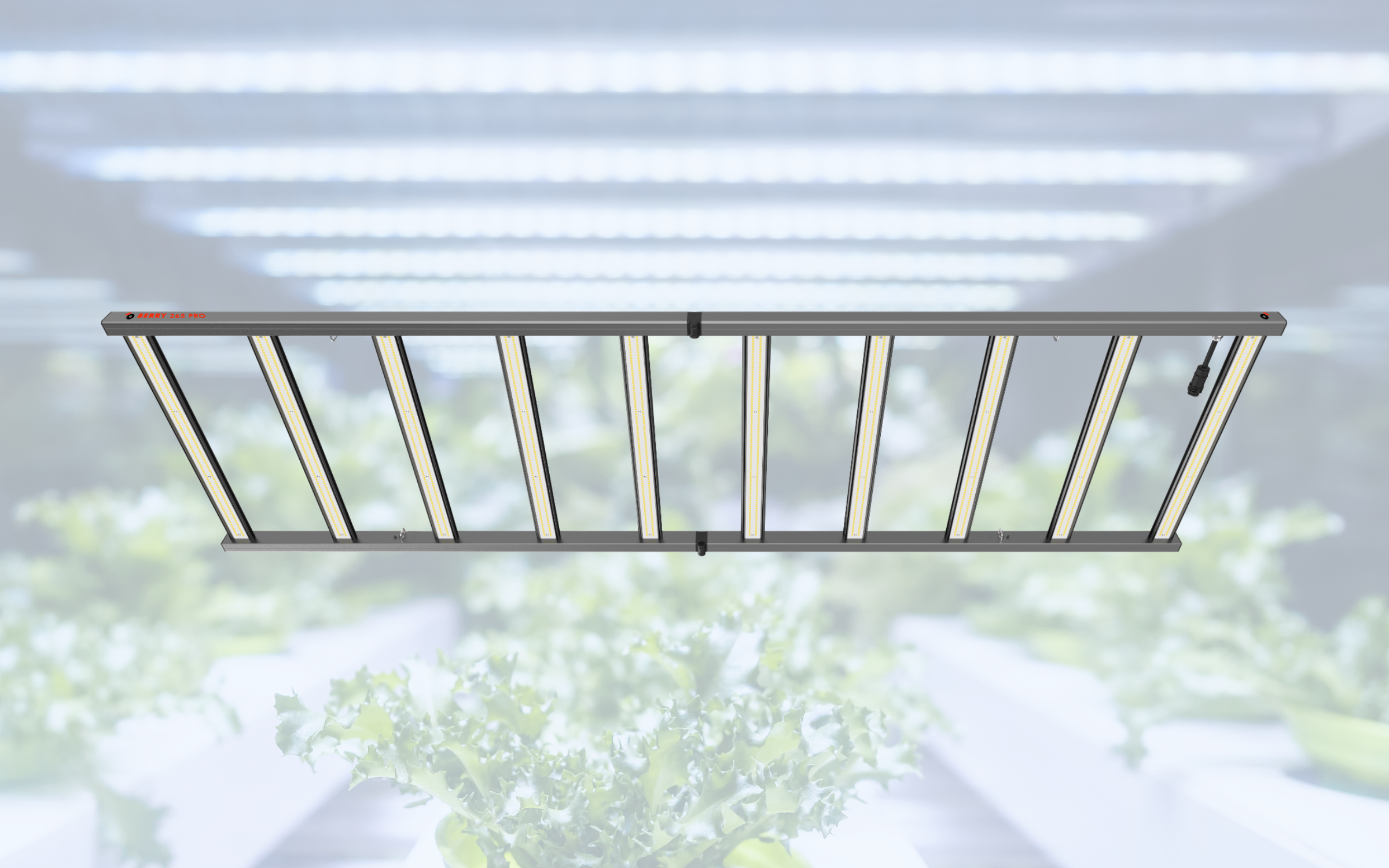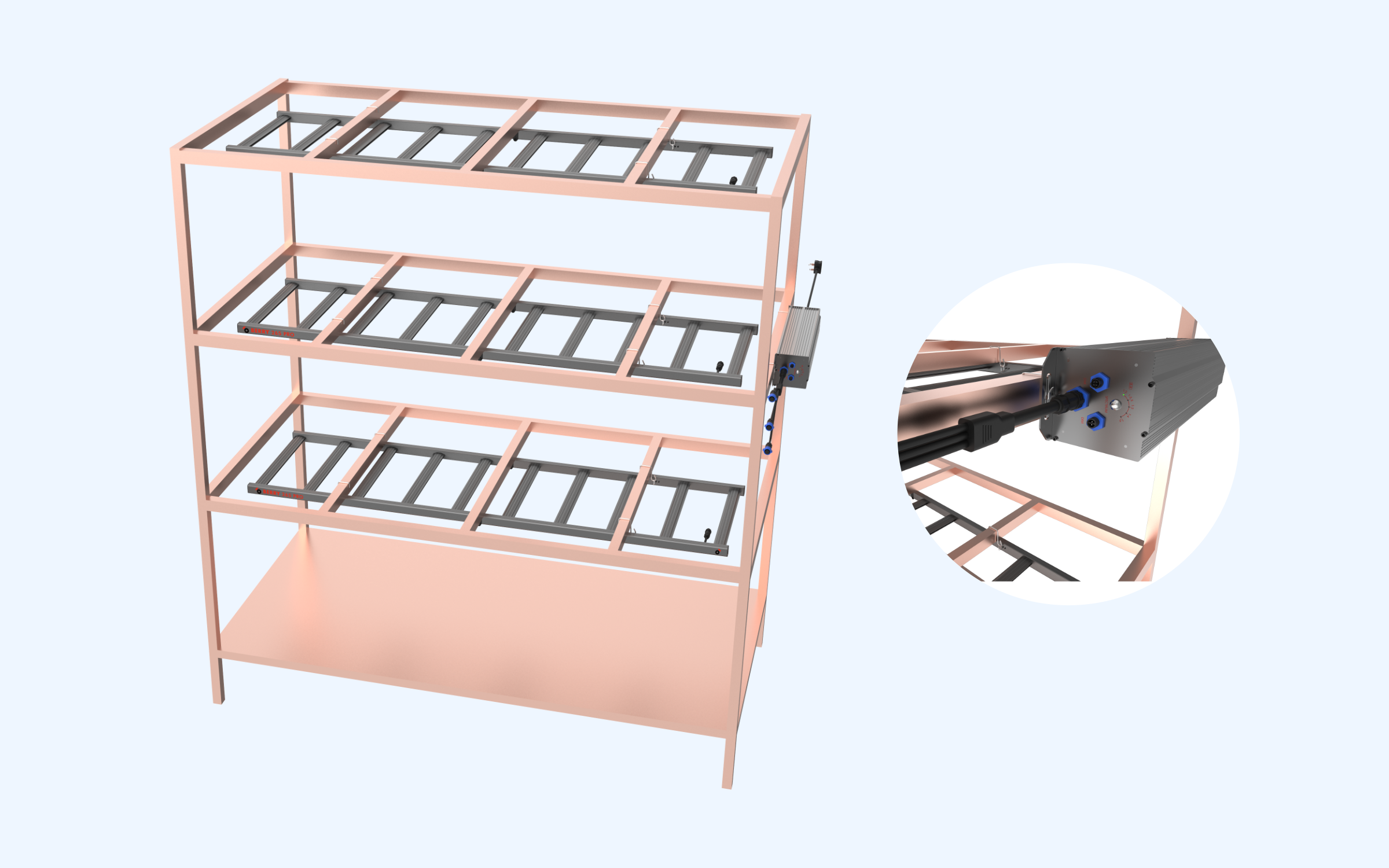Vertical farming solutions
Agriculture has always been a critical aspect of human civilization, ensuring a steady food supply. However, with the growing global population and the limitations of traditional farming methods, new innovative approaches are needed to address the horticultural industry’s challenges. One such solution gaining significant attention is vertical farming. Unlike traditional farming, vertical farming takes advantage of vertical space to cultivate crops in stacked layers, using advanced technology and controlled indoor environments.
NŌKOTECH specializes in LED grow lighting solutions for indoor vertical farming. Our latest vertical farming LED grow light is specially designed for growing all kinds of berries.

- Optimized 5 full spectrums for all phases of berry growth
- Industrial-grade construction and durability, 1.8×0.5m in size
- Higher uniformity and light utilization
- Fully waterproof (IP67 rating)
- One remote ballast for one rack with 3 LED fixtures (the quantity is customizable on bulk orders)
- Has all required certificates (CE, ROSH, UKCA)

We are ready to manufacture individual bulk orders with custom specifications. Please visit our contact page for communication preferences with us.
Moreover, working closely with our partner companies, we can supply all the equipment needed to build professional indoor horticulture farms in the UK and EU.
What is Vertical Farming?
Vertical farming is growing plants in vertically arranged structures, such as multi-layer racks. It employs controlled environment agriculture (CEA) techniques, including artificial lighting, hydroponics, and aeroponics, to provide optimal conditions for plant growth. Vertical farms can maximize production by utilizing vertical space while minimizing the need for land.
What are the advantages of Vertical Farming?
Efficient land use. Vertical farming allows for the production of crops in urban areas or regions with limited arable land. By growing vertically, the same amount of crops can be produced using a fraction of the land required in traditional farming.
Year-round crop production. Indoor farms can control temperature, lighting, and humidity, enabling year-round cultivation. This reduces dependence on seasonal variations and provides a stable fresh produce supply, regardless of external weather conditions. Also, growing crops in controlled environments opens up possibilities for cultivating non-traditional crops and reducing the reliance on imported food.
Reduced water usage. Such type of farming employs hydroponic or aeroponic systems that use significantly less water compared to conventional agriculture. These systems recirculate water, reducing consumption by up to 90%. Additionally, water runoff and contamination risks are minimized.
Enhanced crop yields. The controlled environment in vertical farms optimizes plant growth conditions, resulting in higher crop yields. Precise management of factors such as light, temperature, and nutrient levels promotes faster and healthier plant development.
Minimal Dependency on Pesticides. Indoor farming environments are naturally more protected from pests and diseases, reducing the need for chemical pesticides. Moreover, integrated pest management techniques, such as biological control methods and sensors, can detect early signs of plant stress and reduce risks to a minimal level.
Lower carbon footprint. Locally grown vegetables and berries reduce transportation distances, lowering carbon emissions associated with food distribution. Moreover, this type of farming can integrate renewable energy sources, such as solar panels or wind turbines, further reducing its environmental impact.
LED grow lights. LED grow lights are preferable in vertical farming due to their energy efficiency, adjustable spectrum, longer lifespan, and targeted light output, resulting in optimal plant growth, increased yields, and reduced energy costs.
In the future, vertical farming could play a vital role in urban food security and the global food supply chain. It can be integrated into urban infrastructure, providing fresh produce directly to local communities. Vertical farming represents a paradigm shift in agriculture, offering a sustainable and efficient alternative to traditional farming methods. By maximizing land use, conserving resources, and minimizing environmental impacts, vertical farming holds great potential for addressing the challenges of food production in an increasingly populated and resource-constrained world. With ongoing technological advancements and increased adoption, this type of farming can revolutionize how we grow and consume food, paving the way for a greener and more food-secure future.